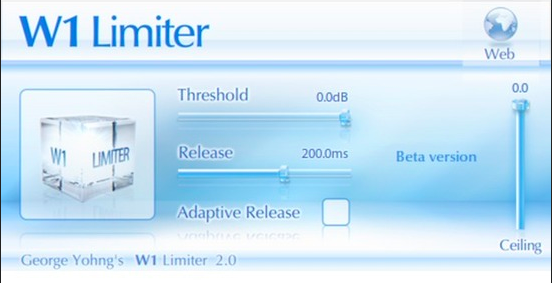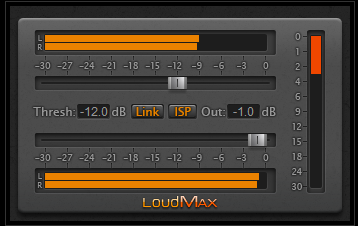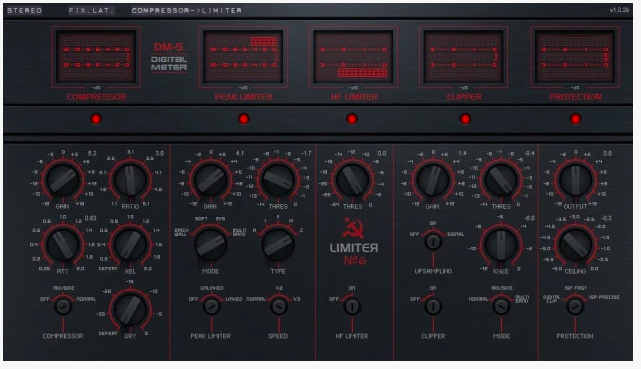Okay, here we go!
Still have some things I wanna do with this, but I’m thinking I’m close enough to get some feedback.
Vocals were tough on this. That’s where I spent most of my time. Eager for your feedback.
Okay, here we go!
Still have some things I wanna do with this, but I’m thinking I’m close enough to get some feedback.
Vocals were tough on this. That’s where I spent most of my time. Eager for your feedback.
Great start. The kick needs more attack. Try making an eq boost around 3-5k and see if you can get the smack of the beater to cut through in the high mids a little more. Add some sub harmonics (below 100hz) to the kick.
The snare has some nice crunch, but try lifting a high shelf at the top and see if you can get it to open up at the top. I didn’t use the bottom mic, but you can use the frequencies that the strainer is generating to give it a subtle bit of rattle which makes it sound more complex.
Try using automation on the bridge to prioritize what’s important and what’s less important.
The cymbal hits on the prechours aren’t making enough of a splash in my opinion. Add top to them to try and lift the sparkle over the top of the rest of the mix 
Thanks. So I did exactly that: boosted at about 75 and also 4K. Maybe I need to boost those more; I actually brought the kick volume down a smidge cuz it was loud enough, but still sounded dull. Still lacked that crack. I’ll try boosting even more, and maybe adding CLA76 to the kick buss. Maybe that Smack Attack plug you rx’d will do the trick for me. Bought it but haven’t used it yet.
Cool. I didn’t use the bottom either (well, it’s not muted, but is turned way down). I added an AD2 resample. Don’t recall which. The top snare had a lot of ring. I’ll mess with that and maybe try to tame it with some EQ so I can add it in a bit more.
What is a strainer? (I’m not a drummer)
I actually did a ton of automation. Anything in particular I’m missing?
I’ll do it. Thanks for the bash. Very helpful.
I agree with Jonathan about the cymbals and the kick. I also think that first snare hit as it goes into the chorus seems to kind of pop out too much. I think I’m hearing some compression pumping in spots. Do you have a compressor on the master buss by any chance?
Tegan, If you do, you should probably take it off. None of the ones in the Waves Gold or CLA bundles work well on a 2 bus. The good Waves options for a 2bus comp are the Fairchild, SSL Comp, and API 2500. Greg Wells and CLA both have 2 signature 2 bus processors in Waves.And then after the bus compressor, you ideally want to place an L1 or an L2 limiter.
I’m actually not sure what to do without any of that stuff. @miked @ColdRoomStudio @blairhall1974 @bozmillar - do you guys know where you can get a decent bus compressor and brick wall limiter for free? Are there any freeware plugs for this out there?
For free, I dunno… there’s a lot of good free compressors that aren’t suited for bus compression but I couldn’t think of any (and google didn’t help) that are good bus comps. Now if we shift from free to cheap I think the options open up a fair bit.
Depending on the DAW there might be a nice stock option too
You guys amaze me. DK how you can hear that, but yes. I typically add a fast and transparent compressor as the first thing on my mix buss, just with 1-2 dB gain reduction, just to capture stray peaks. Not really audible. Then I typically add a limiter as a last step, just to make sure I don’t clip. I don’t compress much, cuz I shoot for -14 LUFS integrated.
However, that said, I added a Klanghelm MJUC, Jr. also this time, just for more glue and sound. I never do that! I do it once and get caught. I can’t get away with nothin’!
Good ear, Jed (hey, IDK if that’s your real name, but what else could @Jclampitt possibly stand for, right?). 
I’ll take it off and repost, with fixes to the cymbals and kick.
Thanks, man.
Nothing wrong with mix buss compression, but watch out for pumping. Mess around with the attack and release settings. Try a slower attack and faster release maybe. Or actually it could just be that second compressor you added causing the pumping. And my name is Jesse lol.
I can recommend several that get excellent reviews and sound good to my ear:
Mix Buss Compression
Limiting


 - but the thing is unbelievable. Five modules: an RMS compressor, peak limiter, high-frequency limiter, clipper and a true peak limiter. Brickwall and soft limiting, mid/side, even a multiband mode. It’s bizarre that thing is free. TDR sells a paid version of it, but I think it’s the same thing. I know in the paid version you can reorder the components. I can’t recall if you can do that in the free version. But this thing is impressive. Clean, flexible.
- but the thing is unbelievable. Five modules: an RMS compressor, peak limiter, high-frequency limiter, clipper and a true peak limiter. Brickwall and soft limiting, mid/side, even a multiband mode. It’s bizarre that thing is free. TDR sells a paid version of it, but I think it’s the same thing. I know in the paid version you can reorder the components. I can’t recall if you can do that in the free version. But this thing is impressive. Clean, flexible.
So, IMHBAO, all of these are excellent: but the Klangehel MJUC and TDR Kotelnikov are listed in this review of “The Best Bus Compressor Plugins.” It lists them alongside the SSL-G, UAD API 2500, Slate’s FG-Grey, Fabfilter Pro-C2, and others. Hope that helps.
Helpful. Thanks! I’ll try that before I remove the Klanghelm. Eager to hear what you think.
There’s some interesting detail in this. I can hear a number of things clearly and distinctly. My notes/impressions are that the vocals are really strong and tend to dominate the mix (except that quieter passage from 1:57-2:10). The vocals don’t seem to sit in the mix well in the loud parts IMO - they’re kind of riding on top. Maybe drop the level or compress them some more? There also seems like a bit of a piercing resonance in his voice in many of the vowels in the chorus, some particular note he is hitting, that may be enhanced by your processing. Upper midrange area I think (maybe 1.5k or 3k), and 1:35-1:54 for example. It might not be as noticeable if you drop the vocal level though, they may be related, so maybe start there first.
In a few places the snare seems to pop out too much, like 0:41-0:57.
I think if the vocal level/presence is more controlled and the some of the louder snare spots are managed this may be in pretty good shape.
Updated. Worked on drums and balance and more automation and vocal editing. Welcome feedback on my high end (cymbals, hh), per @Jonathan; too much or okay? Feeling much better about the kick/snare, but relish feedback on how I did, re: tone, attack, balance in the mix.
This mix was from last night, prior to your comments, @Stan_Halen. Still a ways to go. But getting there.
Nooooooo. haha. Other way around. You want that 2 bus compressor to have a super slow attack and a lightning fast release. But if its too absurdly slow it’ll damage your transients. So FET style compressors in general make very poor 2 bus comps. You can make an 1176 slow, but slow is not what an 1176 does well. 1176’s and many other FET style compressors shine when they’re set the opposite of how you want a 2 bus compressor set.
I only ever use 3 bus comps. The SSL, Focusrite, and Fairchild. Shadow Hills and API are usable, but I don’t like them. SSL for rock, most country, and high energy pop rock, Focusrite when I need one that doesn’t dig and is subtle, Fairchild for stuff that’s very delicate and super sensitive. Basically SSL and Focusrite when hard pounding drums or drum samples are involved. I would use the Focusrite on stuff like a Jazz Ensemble or bluegrass group. Fairchild for mixing like…musical theater, film scores, and opera.
Ok. Pick one or the other. Both together could be making an enormous mess because of how the attack and releases might interact.
I haven’t used that Klanhelm in so long I can’t remember what it sounds like. Its supposed to be a really well engineered software compressor. It was modeled off a Vari-mu style, so its most similar to the Fairchild in design, but it probably doesn’t sound much like one (which isn’t necessarily a bad thing, it just means I can’t give you any meaningful advice on how to use it). As for the other one, I have no idea what to advise. The knee is really important for making the pumping sound not get audible, and the release RMS is what differentiates most limiters, but without trying the plugin I have no idea what it does.
If you had a Waves SSL comp I could tell you exactly how I set mine…I used the UAD one and the two are really close.
The kick is better, but the changes to the snare created a different problem. Try pulling the snare mic down quite a ways. Then pull the overheads up and use the snare bleeding into the overheads to compensate for the direct snare that was subtracted. I think the problem now is the snare is sticking out like a sore thumb because you’re relying too much on the direct mic for body and sonic depth. Also, your cymbals aren’t loud enough, which is what clued me off that there wasn’t enough snare coming through the overheads.
Also, just so you know, never never use a gate on the overheads. Unless you want some kind of weird effect as part of the song, gating your overheads is almost a sure way to ruin a mix. What do you have gates on now? That could have also caused some of the pumping that we heard earlier.
That SSL bus comp is on sale today. You can get it for under $50. If you have a voucher handy, now might be a good time to use it.
Thank you for this. I was under the understanding that on my mix buss, as a first step, I want only to trim extreme transients, just to tame things so as to provide more consistency and glue. So, not adjusting the threshold to kill the transients on snare/kick/etc., but catch strays. So my understanding is that to do that you use a faster setting and very little gain reduction (like 1-2 dB tops).
But with a slower, say opto, compressor, it won’t touch the peaks but will provide more general smoothness and coloring, which isn’t what I’m shooting for.
Not being argumentative at all, but just trying to understand. Could you explain?
So, to clarify, actually on this mix, my release was 140, attack 32 and a 2:1 ratio. I set it so that if I solo the drums the gain reduction meter dances perfectly with the beat of the kick and snare.
On mix 2 I did away with the Klanghelm. I’ve not used it a lot. It’s reviews are outstanding, but in this mix I was getting tons of white noise (bringing my meters at rest to -40 dB floor noise!). Took me a bit to isolate it, but when i took the Klanghelm away, the problem went away. Hm.
Anyway, on my mix bus I have only the Kotelnikov, as above, and a multi-band with very mild settings.
Oh, no. No gate on the OH.  I only put a gate on some of the close mics, particularly the snare and kick, cuz a lot of bleed. All I did on the OH was the Omni, followed by a little Vitamin for color and to bring out the highs more clearly. Well, on the mix below I also added some CLA76 (not there on mix 2).
I only put a gate on some of the close mics, particularly the snare and kick, cuz a lot of bleed. All I did on the OH was the Omni, followed by a little Vitamin for color and to bring out the highs more clearly. Well, on the mix below I also added some CLA76 (not there on mix 2).
That is helpful. Very helpful. I tried fixing it with only EQ, but I think you nailed it, that the OH track just needed to come up altogether. I “thought” I was doing that, cuz I started with only the OH and then added close mics and the band around that, but somehow, somewhere, I lost the OH track in all that was going on. So, on this mix #3, I did as you suggested and brought the OH track up, then blended in the other close mic pieces. I also added a smidge of CLA76 to the OH. Made a world of diff for the crash/HH but also the snares.
@Jonathan, thanks for explaining that piece about the cymbals and the OHs. It’s helpful cuz it shows not only what you hear but how you think when you mix.
So I did as you suggested and added a smidge more compression to the vox. Also adjusted the attack/release and made some EQ changes. Does this speak to what you’re hearing?
Hey Tes,
Im going to post my mix right next to your latest post, its not entered in this competition (and has the cool video), and IS DEFINITLEY doing absolutely as little processing as possible - NO FX (just using the room ambience), there was a compressor on the 2 bus (as i like to balance it that way), maybe just a little dynamic adjustment (editing of levels) to fix a few minor things that the band didn’t do so well…
I started to de-mix it a bit just to show you its component parts.
here is just kik and toms
overhead and both snares
all drums and the bass mic
all drums plus the room
vox, guitars, keys and bass
As we are all working with the same basic tracks, I hope this helps you some… ask me for anything you want and I will post the clip.
I often audition the balance of rooms/ overheads and kick drums first to give you a good sense of overall tone. There is a good amount of tone and width to be had from the tom mics too, if you can find a cool way to utilize it.
A 32ms attack isn’t particularly fast or real slow, just about average maybe. But that’s completely dependent on your material. If the meter is showing rhythmic movement it may be fine. BTW, I just picked up the free version of the Kotelnikov as I thought it looked cool and interesting. I’d be interested if you have any more thoughts on it than already posted earlier.
Overall I think this mix in Post #16 is better. There’s still a bit of resonance on the chorus vocal vowel “i” (alive, find, sometimes) but I don’t think it’s as prominent as before.
Yeah, I dunno. I really like it. It’s not much of a cpu hit and has nice features. It’s very clean: preserves the original tone, timbre of your sound. No coloring at all that I can discern. Has an internal sidechain (paid version has external).
Instead of just a release control, it has two: allows you to set the release for peaks and RMS (sustained) signals. Has sortof a mid-side function - well, you can determine the stereo sensitivity in terms of how much it responds stereo data independently or summed.
Interesting thing is the peak crest control, which allows you to further increase or decrease the threshold for peaks relative to the main threshold for the averaged signal.
A lot more features on the paid version, including a frequency dependent ration thing, which is kind of like a single point dynamic eq. I don’t have the paid version.
I use it pretty much all the time on my mix buss. It’s intended for busses or mix buss.
Yeah, the features even on the free version seem pretty phenomenal. I don’t think I have seen some of those on any other plugin. I already looked at the manual, but this will require some time to play around with to get to know it better.